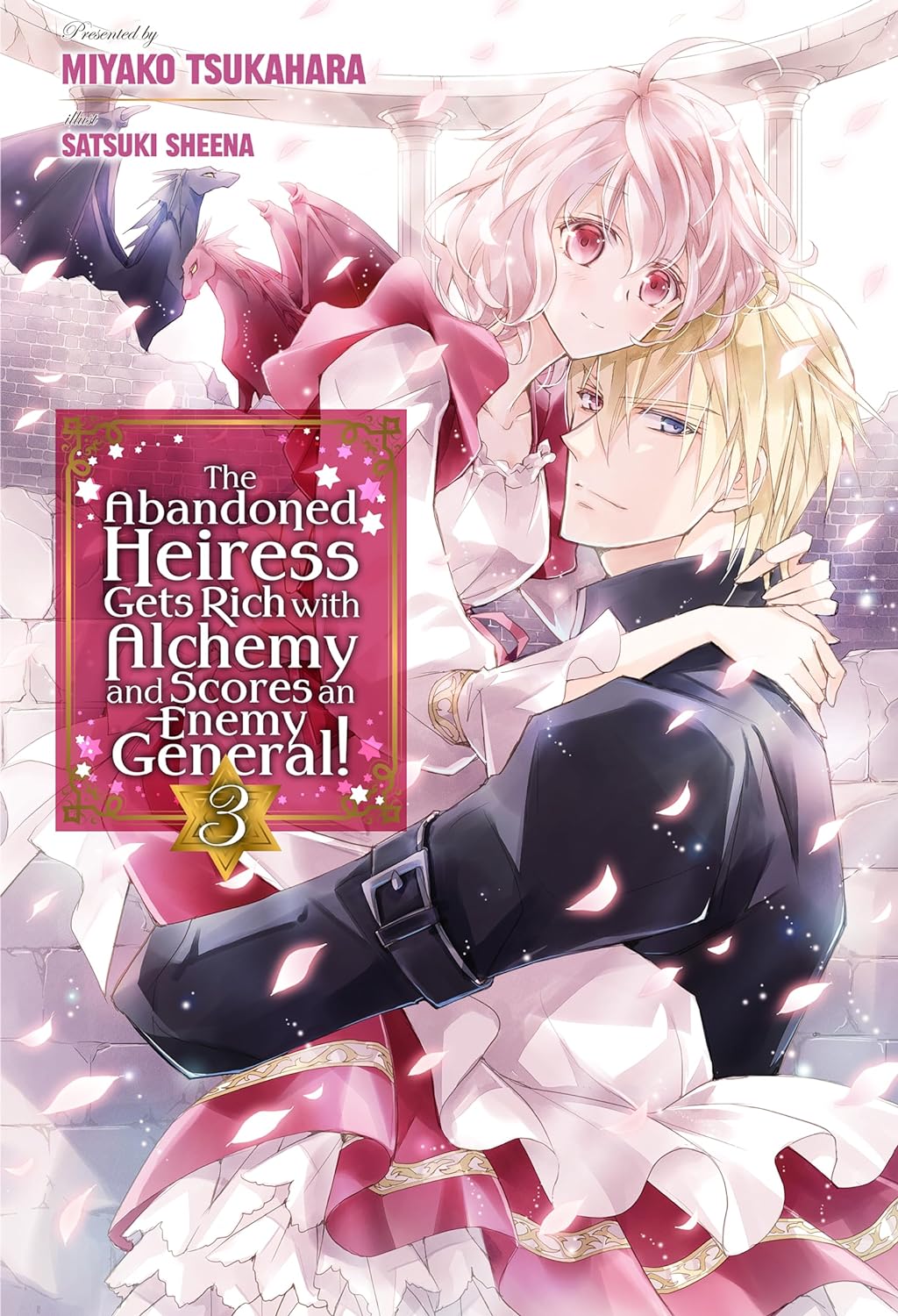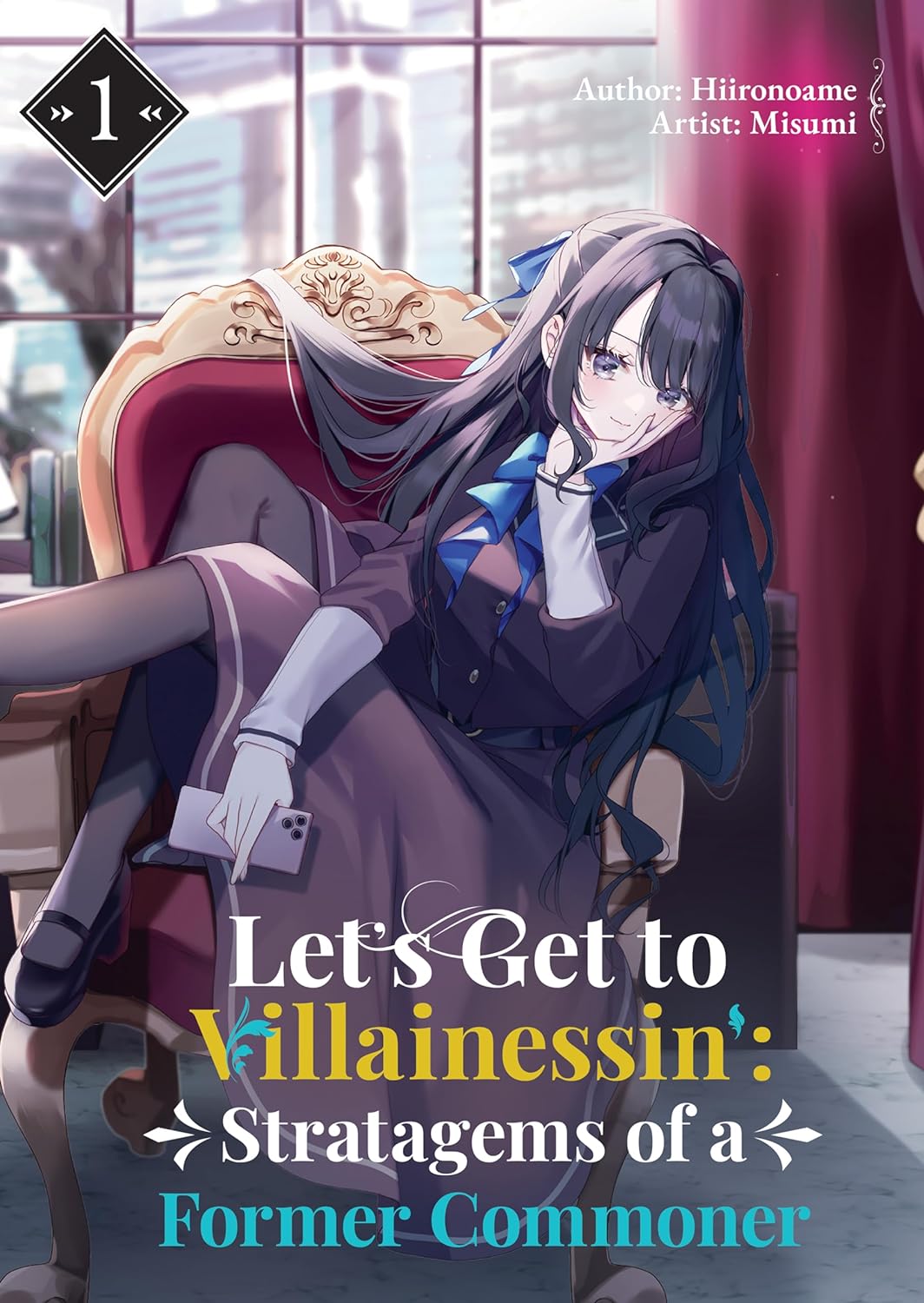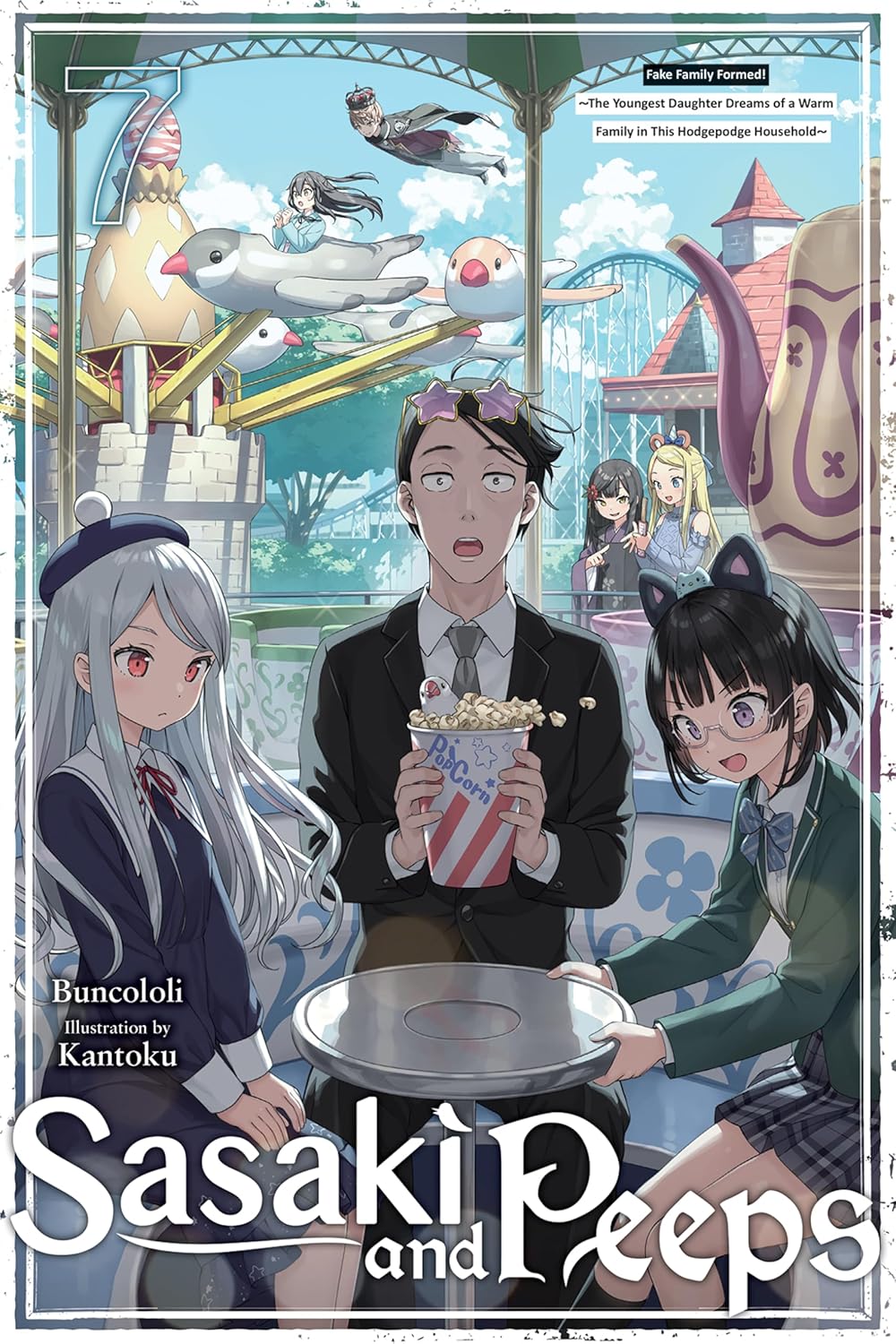By Miyako Tsukahara and Satsuki Sheena. Released in Japan as “Suterare Reijō wa Renkinjutsu-shi ni Narimashita. Kaseida Okane de moto Tekikoku no Shō o Kōnyū Shimasu” by PASH! Books. Released in North America by Cross Infinite World. Translated by piyo.
Sometimes when you get into a habit because you’re trying to project a certain image, it can feel very different when your image becomes the real you. Chloe, through the first two books, has buffed herself up to the point that it was aggravating, describing herself as the world’s strongest alchemist and a beautiful maiden. Well, now she’s managed to go toe to toe with a demon who pretty much wipes the floor with everyone else around, and she also gets to be dressed to the nines at a victory banquet to the point where Julius gets visibly jealous at the looks she’s getting. She really is a fantastic alchemist and beautiful maiden now. Thus… it’s starting to be a little embarrassing to use the phrase. It used to restore her self-confidence, but now it’s like she’s recalling her chuuni phase. This is, of course, adorable. Sorry, Julius.
We pick up right where we left off, with our heroes losing badly. That continues for a bit, though they eventually turn things around thanks to the arrival of a few surprise allies. Unfortunately, some of the villains get away, and there’s no doubt we’ll see them again. After that, though, Chloe recovers from mana depletion, then it’s shopping trips, dress fittings, drunken binges, and endless discussions of her flat chest, a staple of Japanese light novels that we simply cannot get away from. Julius is also more comfortable with her, if with no one else. Now she just has to return home, get a shop assistant who was one of her former rivals, and set about building a Hot Springs Town. While *still* being the world’s greatest alchemist and world’s most oblivious attractive young woman.
The biggest flaw with this book, which you may have figured out from my attempt at a summary, is that it suffers from Webnovel Syndrome. This is a condition that happens when webnovels, which are written in chunks a couple of times a week with little thought as to a natural volume break, are then picked up by a publisher and put out as books which require a book to end after a certain point. Let’s face it, the first quarter of this book should have been at the end of the previous book – it’s all front-loaded here. That said, if the publisher HAD done that, this book would have had zero plot at all, so I suppose it’s a relief that we get some cool fights out of it. The rest of the book very much depends on how much you enjoy Chloe and Julius’ getting closer and closer to a confession but not there yet relationship. Julius thinks his actions (and kisses) make it clear without saying it. Chloe keeps being reminded that she bought Julius and he still wears a slave collar, so confessions might not be reliable.
I assume that the next book is not just going to be building a hot spring, but who knows? Till it happens, this wasn’t as good as the previous two books, but is still good.



